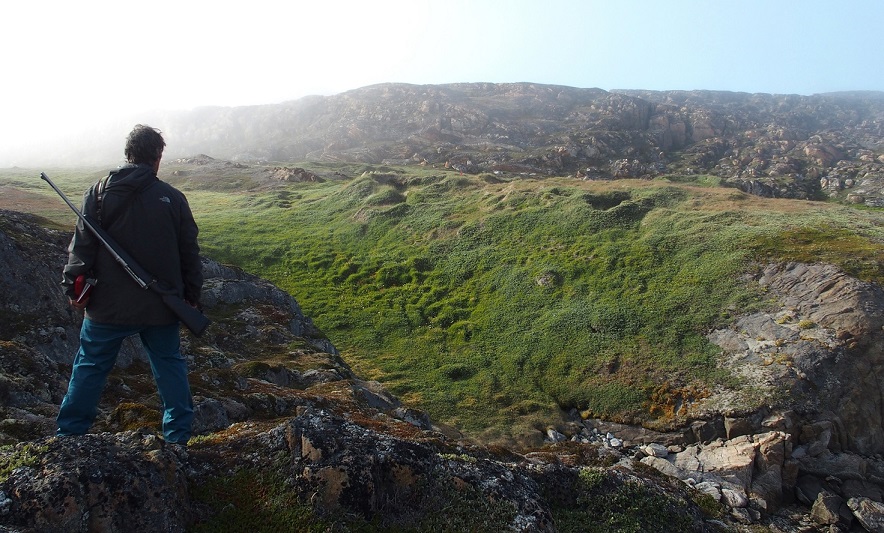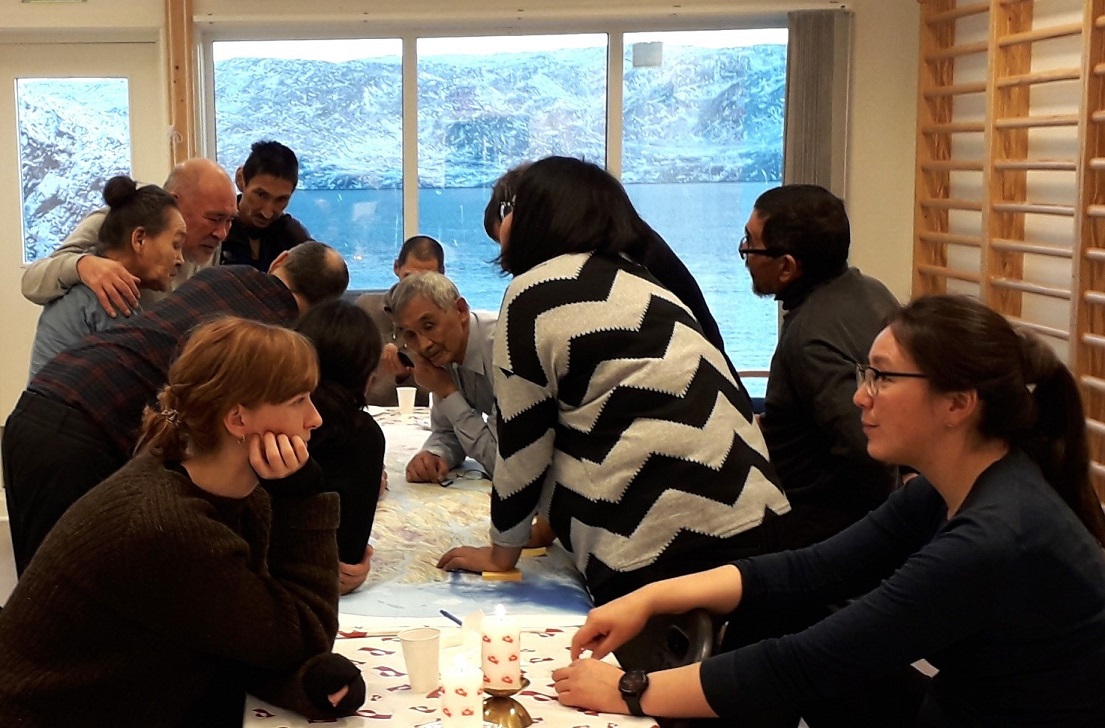’Activating Arctic Heritage’
a research project on UNESCO Cultural World Heritage in Greenland
During the years 2020 – 2023, the research project, Activating Arctic Heritage, carries out a comprehensive, interdisciplinary research program in the two newly appointed UNESCO World Heritage properties in Greenland: Aasivissuit-Nipisat in West Greenland and Kujataa in South Greenland.
Aasivissuit-Nipisat is representing a landscape of the Inuit hunting and fishing culture throughout more than four millennia, whereas Kujataa is an Arctic cultural landscape shaped by the medieval Norse farmers as well as the historic and present day sheep herding and agricultural activities of the Greenlanders.
The research project poses the following main questions:
How did the Inuit and Norse societies cope with often drastic changes in their life conditions in the long time perspective? Which adaptations and strategies were applied by these small scale societies to mitigate climate– and environmental changes, fluctuating resources, and severe economic and political changes during the last millennium – i.e. the period from the Medieval Warm Period, via The Little Ice Age to the Present.
The project deals with these fundamental questions by means of archaeological surveys and excavations at selected key sites in the two World Heritage areas as well as historical studies. These are combined with natural scientific studies on environmental change.
Also questions about preservation conditions of settlements and other prehistoric and historic sites are addressed. The vulnerable Arctic environment, and thus the sites and monuments in the World Heritage areas, are exposed to global warming, modern agricultural activities, resource exploitation and increased tourism. It is one of the tasks of the ‘Activating Arctic Heritage Project’ to help developing new methods to monitor these threats (and potentials) in order to encourage local and national initiatives, which secure a sustainable future of the two World Heritage areas.
Finally, the project aims at anchoring both the research activities and the results in Greenland by collaborating with and involving local stake holders – local museums, UNESCO managers, tourist operators, educational institutions etc. – as well as interested citizens. Co-creation of knowledge and insights is a key concept of the project.
’Activating Arctic Heritage’ is a Semper Ardens project (2019 – 2023) sponsored by a substantial grant from the Carlsberg Foundation. The project is based on close collaboration between the national museums in Greenland and Denmark, and it is headed by research professor Bjarne Grønnow, Principal Investigator (The National Museum of Denmark) in concert with vice director Christian Koch Madsen, Co-Principal Investigator (The Greenland National Museum and Archives).
The Activating Arctic Heritage Project in Kujataa, South Greenland
In the southern world heritage property, Kujataa, the project includes a suite of archaeological and environmental historical investigations. The project studies the life conditions of the Norse population through analyses of human skeletal remains from new excavations on the cemetery of the cathedral in Gardar (Igaliku). These data are combined with analyses of a quite comprehensive material of Norse human remains from earlier excavations. By means of ‘state of the art’ bio-archaeological and physical anthropological analyses it is the aim of this sub-project to gain new insight into the health, resource utilization and access to food resources in the Norse society in the period from c. 1000 – 1400 AD. The hitherto quite unknown vegetable component of the Norse diet will be investigated through analyses of macrofossils (seeds and other plant remains) in the midden layers of the Medieval farms.
Another sub-project is targeting the Inuit cultural history of Kujataa. The Inuit settled this area in the wake of the abandonment of the Norse Eastern Settlement in the first half of the 15th century. This re-settling process by hunting societies and the history of Inuit resource exploitation, including the establishment of yearly hunting cycles, is an important but quite unknown part of the cultural history of south Greenland.
Box 1 og Figure 1:
Aasivissuit-Nipisat: The hunters’ landscape
The World Heritage area, Aasivissuit-Nipisat, covers a 300 km long East-West cross section of the land between the Inland Ice and the archipelago facing the Davis Strait south of Sisimiut, West Greenland. Through 4.400 years humans have left their traces in the landscape in the shape of ancient settlements, graves, cairns, traps etc. – reflecting the yearly cycles of the hunting and fishing societies between inland and coast. In the summer of 2019 the Activating Arctic Heritage Project carried out surveys and trial excavations on a number of key sites. Several long houses (communal houses) from the 17th – 19th century were documented, and both the density of the settlements as well as the many communal houses show that the Inuit population in the area has been remarkably large, based on rich resources, in particular bow head whales along the coast and caribou herds in the interior. Cultural encounters between Inuit and European whalers as well as early colonists characterize this period in the Sisimiut area. (Fig. 1, photo: Bjarne Grønnow).

Box 2 and Figure 2:
Kujataa: Unique Landscapes of Sub-Arctic Farmers
Kujataa, the southern UNESCO World Heritage property, is a partly preserved medieval cultural landscape originally shaped by the farming of the Norse in the period c. 1000 – 1450 AD. The present day landscape also characterized by sheep farming and agriculture – hay fields and plots with vegetables – is rooted in the family farms established over two and a half centuries ago during the early colonial times.
‘Activating Arctic Heritage’ focuses on the life- and health-conditions of the Norse through analyses of human remains from the cemetery at the cathedral at Igaliku (Fig. 2, foto: Jette Arneborg). Also the quite unknown period between the Inuit re-settlement of the area around 1450 until the colonization is targeted.

Box 3 and Figure 3:
Dialogues and co-creation
In the project the production of new knowledge and insight is based on ‘co-creation’ where different knowledge-domains of local citizens, institutions and stakeholders as well as the researchers of the project are combined (Fig. 3, photo: Martin Appelt).
The anthropological component of the project is investigating how this new, integrated knowledge production works and how it facilitates local ownership as well as development of plans and vision for a sustainable future for the World Heritage areas of Greenland.
